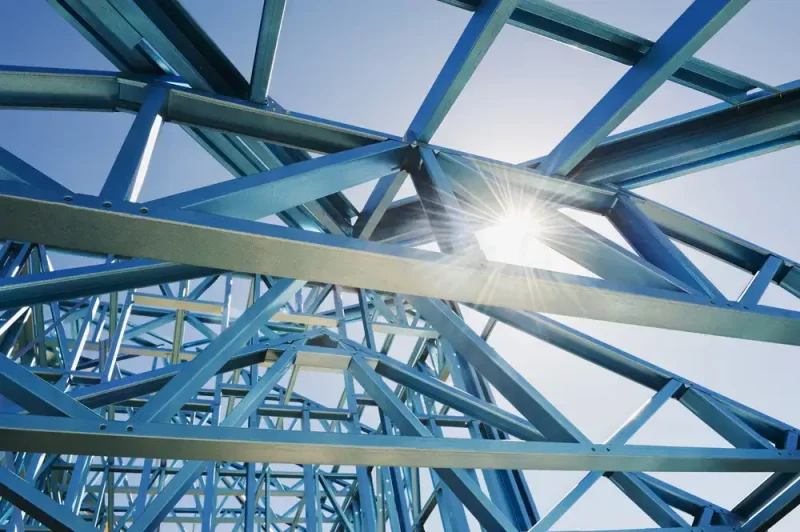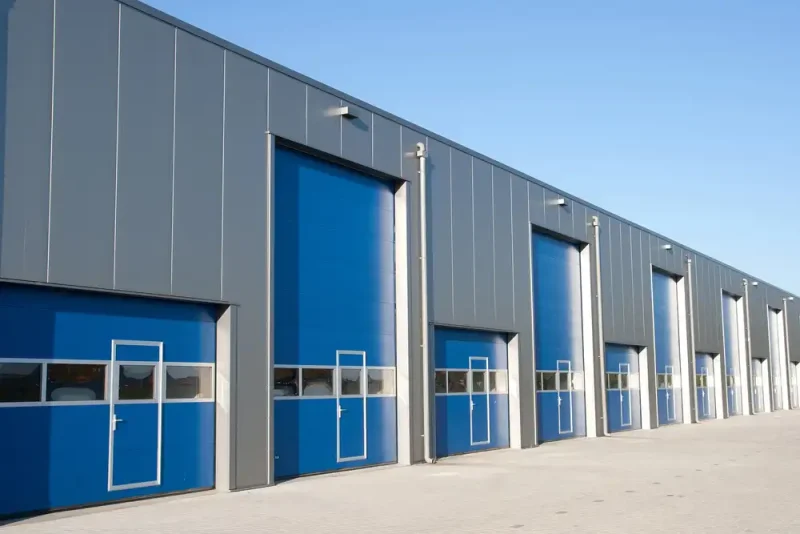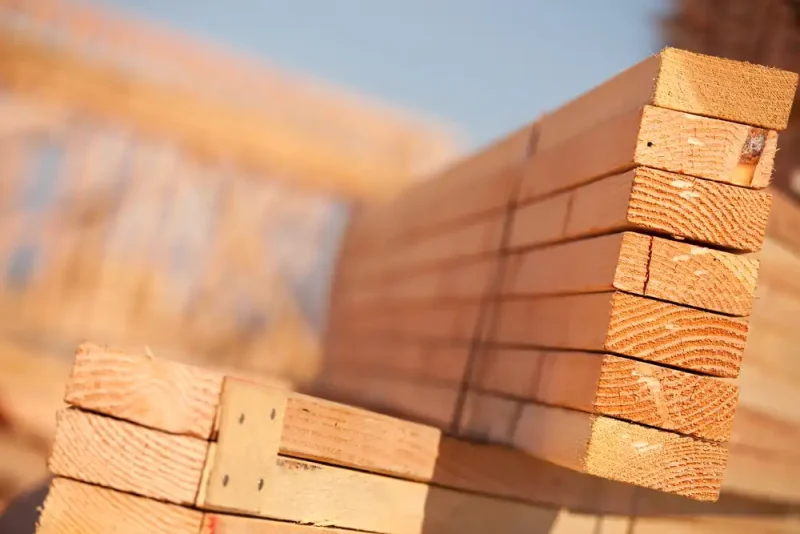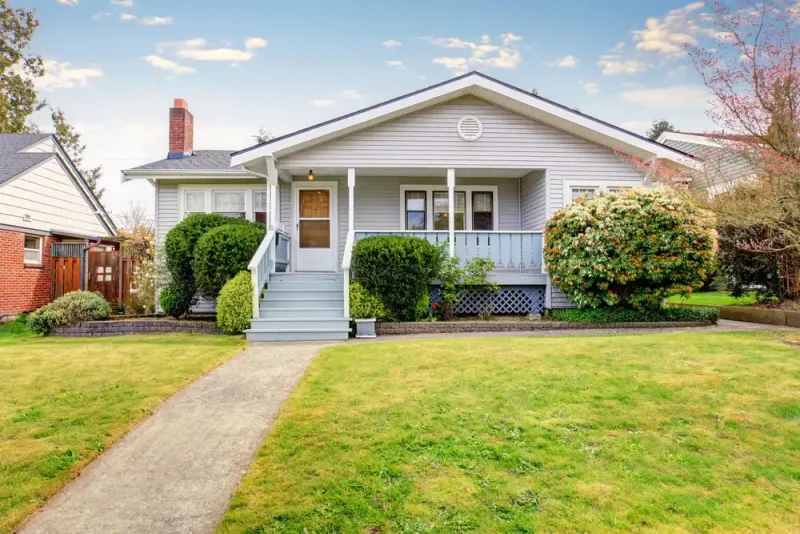When starting a new construction project—whether it’s a barn, garage, warehouse, shop, or even a custom home—one of the biggest decisions you’ll face is the building material. For many property owners, the choice comes down to two primary options: steel or wood. Each material has its own advantages and limitations, and the right choice depends on your budget, design goals, long-term maintenance expectations, and how you plan to use the space.
At HLS Construction Group, we work with both wood-framed and steel-framed buildings, and we help our clients make informed decisions based on their unique needs. If you’re wondering which route is better for your next project, here’s a side-by-side comparison to help you decide.

Strength and Durability
Steel:
Steel buildings are incredibly strong and built to withstand high winds, heavy snow loads, and even seismic activity. Unlike wood, steel doesn’t warp, split, or rot over time. It also holds up better under long-term stress and is ideal for larger structures like warehouses, airplane hangars, industrial shops, or commercial storage facilities.
Wood:
Wood is strong—but not as strong as steel when it comes to load-bearing and structural integrity over time. While wood is flexible and easy to work with, it’s vulnerable to moisture, pests, and decay, especially in high-humidity or flood-prone areas. However, for smaller buildings, homes, or projects with lighter demands, wood may be more than adequate.
✅ Winner for Strength: Steel
Cost and Affordability
Wood:
Wood-framed construction tends to have a lower upfront cost than steel, especially for smaller or simpler buildings. Materials are readily available, and many local builders are more familiar with wood construction, which can keep labor costs lower.
Steel:
Steel buildings may have a higher initial cost due to the materials and prefabrication involved, but that cost often balances out over time. Steel is faster to erect (thanks to pre-engineered kits) and usually requires less long-term maintenance. For larger structures, the per-square-foot cost can actually be lower than a similar wood-framed design.
✅ Winner for Short-Term Cost: Wood
✅ Winner for Long-Term Value: Steel

Speed of Construction
Steel:
Most steel buildings today are pre-engineered, meaning the components are manufactured off-site and delivered ready for assembly. That significantly reduces build time. Erection of the main structure can take just a few days, even for large buildings.
Wood:
Wood structures require more cutting, fitting, and on-site adjustments, which can slow down construction. While experienced crews can move quickly, wood framing almost always takes longer than erecting a steel structure of the same size.
✅ Winner: Steel
Customization and Design Flexibility
Wood:
Wood is extremely versatile and easy to customize on the fly. For residential construction or unique design aesthetics, wood gives architects and homeowners more flexibility. You can make changes during construction, add decorative elements, or modify the layout without too much hassle.
Steel:
Modern steel buildings have come a long way in terms of customization, but most are pre-engineered, so changes after fabrication can be costly or impossible. That said, steel still offers a wide range of design options, especially with modern finishes, facades, and interior layouts.
✅ Winner for Flexibility: Wood
✅ Winner for Pre-Engineered Efficiency: Steel

Energy Efficiency and Insulation
Wood:
Wood naturally insulates better than steel, which can make it easier to regulate indoor temperatures in smaller buildings or homes. Wood framing also works well with traditional insulation materials.
Steel:
Steel conducts heat and cold more readily than wood, meaning it requires proper insulation systems to stay efficient. That said, with the right design and insulation (such as spray foam or insulated panels), steel buildings can be just as energy-efficient as wood-framed ones—and often more airtight.
✅ Winner: Tie, depending on insulation used
Maintenance and Longevity
Steel:
Steel buildings are low-maintenance and built to last. They won’t rot, warp, or attract termites, and they’re resistant to mold, mildew, and fire. With minimal upkeep, steel buildings can last 50+ years with no structural issues.
Wood:
Wood requires more maintenance over time. You may need to treat the wood, repaint, repair warping or splitting, and protect against termites or rot—especially in areas with extreme weather or moisture.
✅ Winner: Steel

Environmental Impact
Steel:
Steel is one of the most recyclable materials in construction. Many steel buildings use recycled content, and steel can be repurposed again at the end of the building’s life. However, steel production is energy-intensive.
Wood:
Wood is renewable, biodegradable, and stores carbon, making it a popular choice for eco-conscious builders. However, sustainable harvesting and responsible sourcing are key to its environmental benefit.
✅ Winner: Tie, depending on sourcing and project goals
Best Use Cases for Each
Choose Steel If You’re Building:
- A warehouse, shop, or industrial space
- A garage or metal barn (barndominium)
- A structure that needs wide, open interiors with no interior support walls
- In a region with high winds, termites, or fire risk
- A long-lasting building with minimal maintenance
Choose Wood If You’re Building:
- A residential home or cabin with high aesthetic expectations
- A smaller budget-friendly structure
- A building that requires frequent customization or design changes
- In areas with mild weather and lower risk of pests or moisture damage
So, Which Is Better?
There’s no one-size-fits-all answer. Steel buildings are best for strength, durability, and large-scale projects. Wood buildings are best for residential-style flexibility and upfront affordability. Your decision should come down to what you need from your building—its purpose, your budget, and your timeline.
At HLS Construction Group, we specialize in both steel and wood construction and can help you weigh your options based on the real-world goals of your project. Whether you’re building a barndominium, warehouse, garage, or home addition, we’ll walk you through every step—from planning and design to final build—with honest advice and expert craftsmanship.
Contact HLS Construction Group today to schedule a consultation and get started on your next project—with the right material, the right team, and the right plan.
